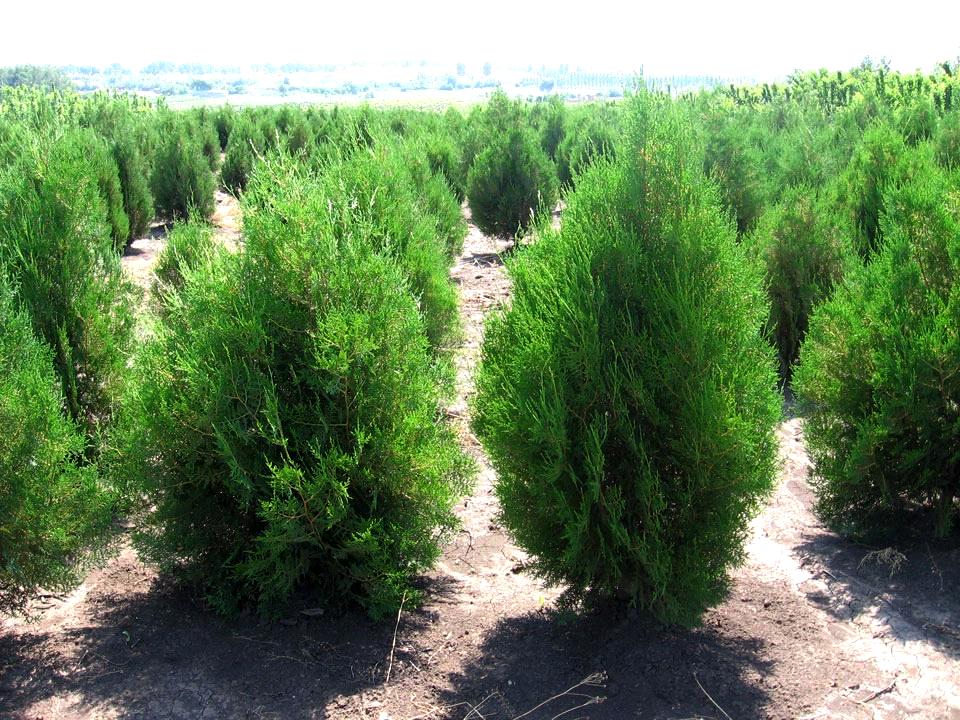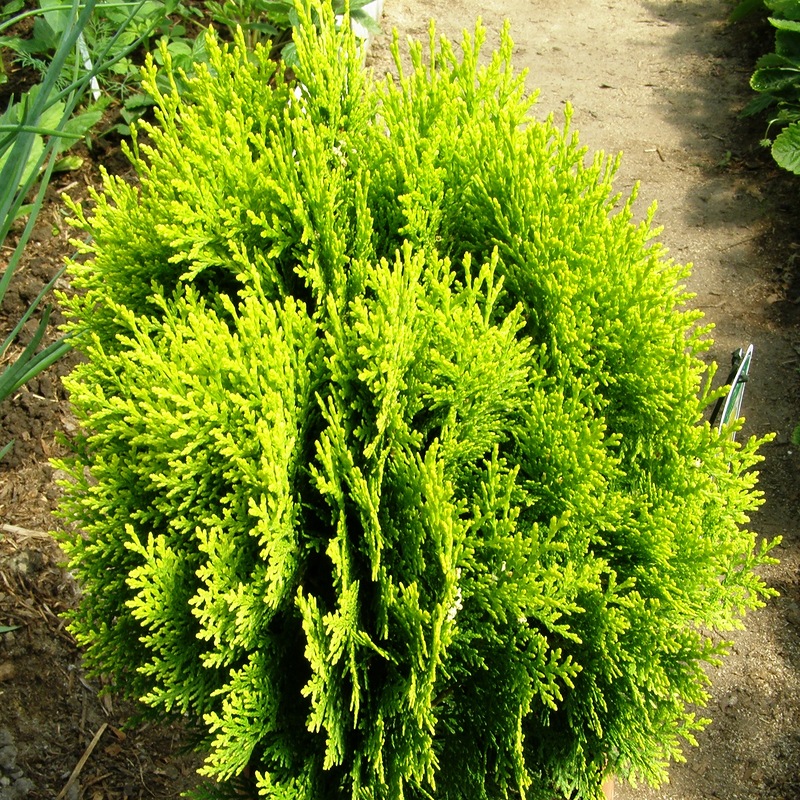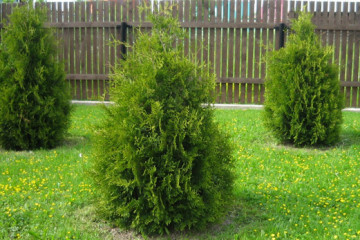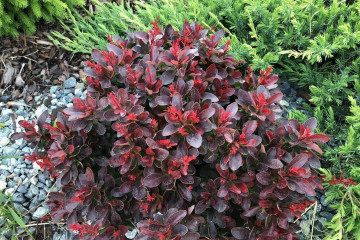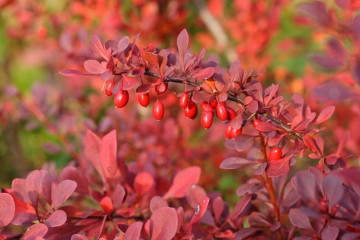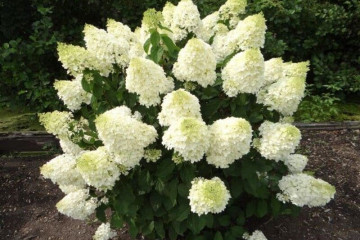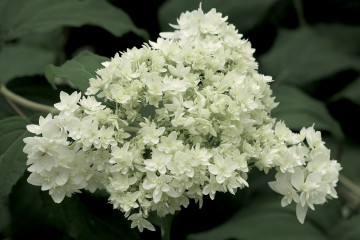Thuja oriental - varieties, description, sizes
Content:
Thuja are especially popular in gardens and landscape design. And the reason for this is not only their evergreen appearance, but also a long lifespan, as well as unpretentious care. One of the varieties of this culture is the eastern thuja. How she looks and what conditions she needs will be described below.
Botanical description
Thuja orientalis (in Latin "Thuja Orientalis") is an evergreen tree belonging to the Cypress family. In natural conditions, it is widely distributed in the forests of Korea, China and Japan. It can also be found in mixed forests of Russia and Ukraine.
Also, this species is called thuja biota or tree of life. The plant got the last name due to its medicinal leaves and seeds. The tree itself, in the process of growth, releases phytoncides that cleanse the environment from viruses and microbes.
The crown of a young thuja has an ovoid shape, which becomes canonical or pyramidal with age. During the year, the tree grows only 15-17 cm in height and up to 15 cm in width. The height of an adult thuja reaches 15-17 m and a diameter of 4-5 m. The main branches grow vertically to the trunk, the branches are slightly raised, and the small branches are tightly pressed.
Evergreen needles are tightly pressed against the branches. In winter, the lateral leaves acquire a brownish tint, and by spring they turn green again. The needles live no more than 3 years, after which they fall off along with the branches. The flowers are represented by dusty buds and have no decorative value.
Species features
There are three main forms of the flat-headed plant: tall, dwarf and undersized. The first is used in the creation of hedges, park alleys and garden groups. The second form is widespread in rockeries and small garden plots. Low-growing varieties are often found when creating live borders.
The widespread use of thuja in landscape design is due to a number of reasons:
- most varieties are unpretentious. They can grow on any soil, easily tolerate drought and do not need regular feeding;
- the compact root system of the fibrous type provides the plant with good survival rate even when transplanted in adulthood;
- a large number of varieties allows you to choose the best option for growing.
Groups of varieties according to the growth rate, shape and color of the crown
Thuja flatfish (aka eastern) is widely used to create live borders and hedges. In total, there are more than 50 varieties, but not all of them are suitable for the climatic features of Russia. Only two types are most in demand.
Thuja eastern Pyramidalis (Pyramidalis Aurea)
Thuja eastern Aurea has golden dense needles. With its help, you can protect the site from strong winds. In summer, it is resistant to drought, and in winter it is able to withstand frosts down to -25 ° C.
Thuja eastern Aurea Nana (Area Nana)
Tuya Aurea Nana, whose description and dimensions correspond to a dwarf form, reaches a height of less than 2 m. Dense needles take golden hues in summer, and become turquoise in winter.
Growing
The cultivation of this plant is possible on slightly acidic and neutral soil. Also, ready-made substrate and rocky soil can be used as soil. It is drought tolerant, but can also grow when groundwater is close to the ground.
Requirements for climatic conditions
Since biota belongs to southern plants, it is recommended to create optimal conditions for its cultivation. It is also worth knowing some of the individual characteristics and characteristics of this variety:
- drought resistance;
- the ability to grow in shade conditions;
- poor perception of waterlogging;
- in spring, sunburns are possible;
- weak frost resistance;
- thuja is not demanding on the soil;
- the possibility of growing in open areas.
If the plant is grown in more severe climatic conditions, it is recommended to be warmed before the onset of winter. If this is not done, frostbite of the branches will occur and the subsequent death of the entire tree. When grown in southern regions, insulation is not required. In warm climates, thuja grows faster and becomes more luxurious.
Features of growing thuja in Siberia
The flatfish is not able to withstand the severe frosts of Siberia. Even at temperatures below -25 ° C, there is a high probability of plant death. Some gardeners prefer to cover the spring with spruce branches and a lot of snow for the winter. However, such a shelter does not always save you from harsh winters.
One of the most effective options for growing thuja in Siberia is planting it in containers. For this, compact varieties are selected, which in the warm season are exposed to fresh air, and with the onset of frost are brought into a heated room.
Correct seating and seat selection
The landing of the flatfish should be planned for the beginning of May. The spring procedure will allow the plant to better adapt to winter. In the southern regions, planting is possible until the second half of September. As for the location, the best option would be an illuminated area, but without direct sunlight.
Step-by-step procedure for planting eastern thuja:
- The hole is dug to a depth corresponding to the size of the plant root system. On average, this value ranges from 55 to 80 cm. With a close occurrence of groundwater, 20-30 cm of the drainage layer is laid out.
- The seedling is neatly placed in the hole without deepening the root collar. It should be flush with the ground.
- The hole is filled with a mixture of 2 parts of sod land (you can take leaf soil) and 1 part each of sand and peat.
- When planting several thujas of Pyramidalis, Aurea Nana and other varieties, it is necessary to maintain a distance of 1 to 4 m between them.
Reproduction methods
Platyclad, aka platycladus eastern, reproduces in three ways.
- Seeds. They are removed in the fall and stored under the snow or in the refrigerator until spring. This procedure accelerates seed germination. Planting is carried out from April to May in pre-made grooves.
- Cuttings. Two-year-old branches, which are pruned at the beginning of summer, act as planting material. The sections are treated with drugs that stimulate growth, as well as prevent the development of diseases. After that, it is planted in containers to a depth of no more than 3 cm.
- By dividing the bush. If the thuja grows with two trunks, you can carefully separate it. The division should take place in such a way that each of the trunks has roots.
Preparing for the winter period
All young thujas, as well as plants on the trunk, are recommended to be carefully huddled up, and covered with peat in the near-trunk area. To prevent damage to the branches, they should also be tied up before winter. Any non-woven material is used as a cover.
Platycephalus biota is widely used for decoration of private gardens and landscape compositions.Its unpretentiousness and attractive appearance made this type of thuja popular among gardeners.

